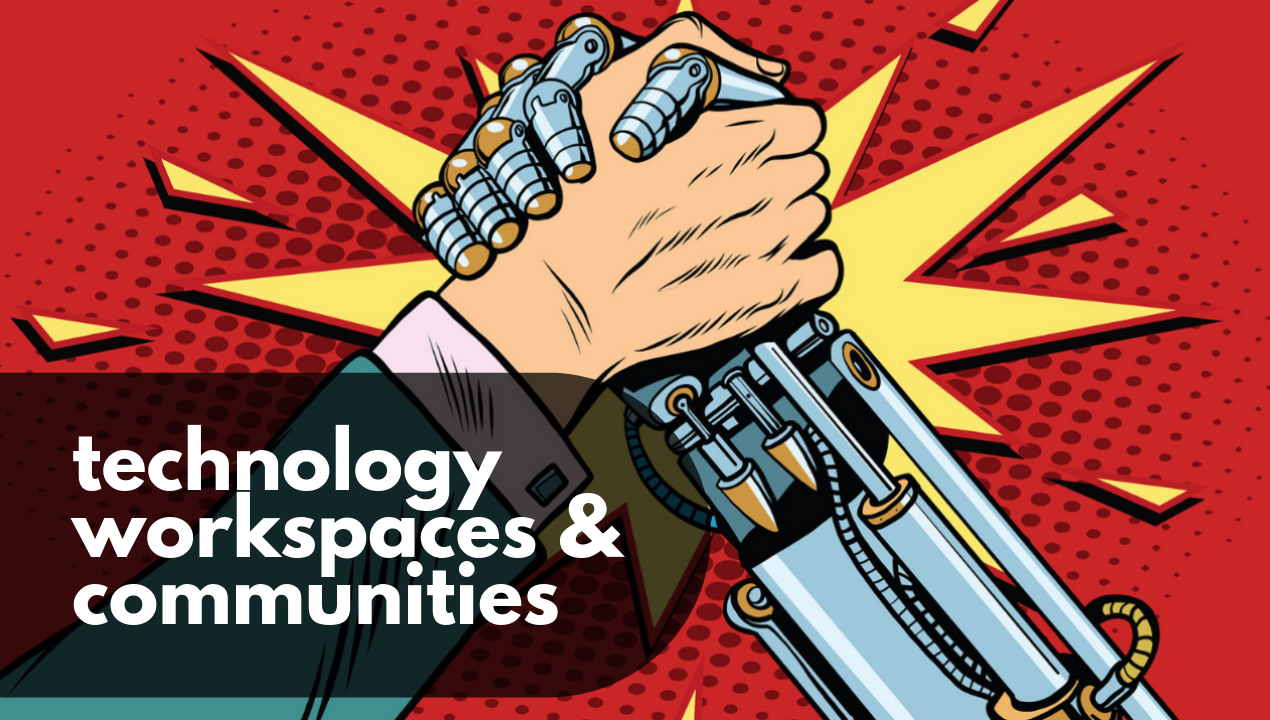- Flexible workspace operators are now in a technical “arms race” where only the strong will survive
- Technologies such as VR will reduce demand but increase rates for flexible spaces
- Data needs to be used both with integrity and to promote a better user experience
We live in a world where AI and machine learning are regularly touted as technologies that will morph into job-stealing robots that’ll cause the end of days for the workforce.
If and when the apocalypse comes, there is good news for the flexible workspace industry: unlike the rest of the planet, technology will be your saviour.
Speaking at a recent webinar, proptech expert, Antony Slumbers, said: “As technology develops and it has a greater impact on the work we are doing, we will do more human work, which builds into the strengths of the flexible market.”
Slumbers makes an excellent point. As autonomy sweeps through the workplace, creative roles will be in high demand and flexible workspaces are perfectly placed to address and meet the demands of this shifting skill set.
And these human demands will be met with the technology that’s integrated into flexible workspaces.
“[Flexible workspaces] are more amenable to human work and interactions,” Slumbers explained. “This is why the flexible market is in such a strong position, because technology is allowing us to be more human. It’s paradoxical.”
As virtual and augmented reality move into the mainstream, more remote work will also be enabled. We could soon live in a future where your colleagues simply pop on a headset from their home office and meet you in a virtual space.
While you may assume this signals the demise of shared workspaces, you’d be wrong. The importance of building a community within the workplace is well documented.
“It’s not binary, just as the office versus working from home is not binary. As a result, people will take less space, use it less often – but pay a lot more for it as it will be set up to do the human work,” Slumbers added.
Technology sets you free
During the essensys Evolving Impact of Technology in the Workspace webinar, technology was identified by all the panelists as a key differentiator between flexible workspaces. However, technology needs to be used to enhance the day-to-day lives of your community to truly set you apart from the competition.
“There is an arms race going on,” according to Slumbers, where your technology platform needs to be, for all intents and purposes, invisible and provide a seamless user experience not just across your workspace, but multiple workspaces in different locations.
Chris Davies, director at Uncommon, said: “The whole user experience needs to change and that’s a challenge. [But] if you can get that right, you will operate at a level that others will try to chase.”
When it comes to technology, security and resilience are paramount for most operators, according to Andrew Debenham, global account director at essensys. These fundamental concerns can usually be addressed by the policies and practices in place by the technology vendor.
However, when it comes harvesting and harnessing user data, workspace operators need to tread carefully.
Data integrity for user retention
Our data is no longer our own as an increasing number of devices record our day-to-day lives. However, workspace operators need to develop a robust data strategy, according to Slumbers, who explained: “When you are thinking about what data you want to collect, think about what you want to do with it and how this data will make your occupiers’ lives easier. Then, hone in on the user experience.”
“There will be a big positive for operators who understand their customers as they will get locked-in as a certain space knows you, so you don’t want to leave it.”
If there was one point to highlight from this webinar, it’s that technology isn’t just a differentiator between workspaces. You can’t gleefully announce “my wifi connection’s better than yours” and sit back expecting your community to grow.
Technology is a differentiator between workspaces and an enabler to build communities within those workspaces. The integration of high-tech solutions into flexible spaces will allow human workers to create and innovate way into the future.


 Dr. Gleb Tsipursky – The Office Whisperer
Dr. Gleb Tsipursky – The Office Whisperer Nirit Cohen – WorkFutures
Nirit Cohen – WorkFutures Angela Howard – Culture Expert
Angela Howard – Culture Expert Drew Jones – Design & Innovation
Drew Jones – Design & Innovation Jonathan Price – CRE & Flex Expert
Jonathan Price – CRE & Flex Expert













